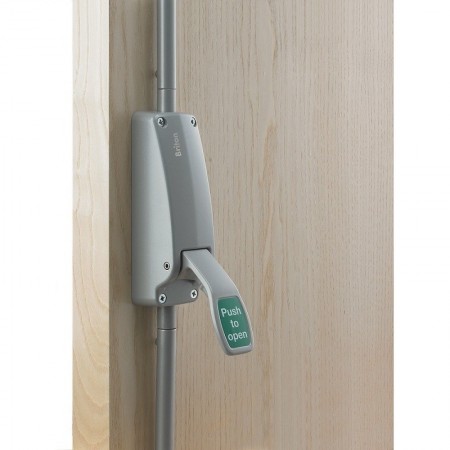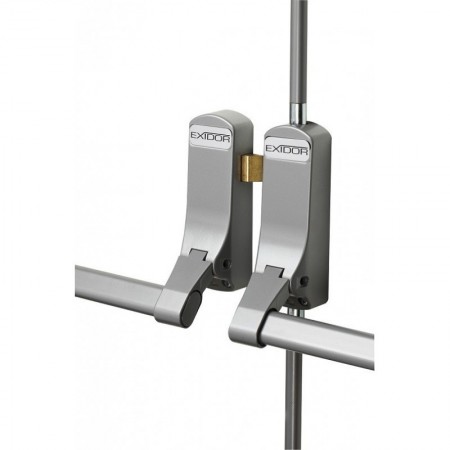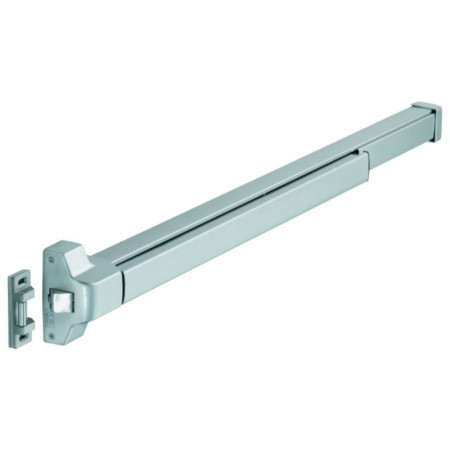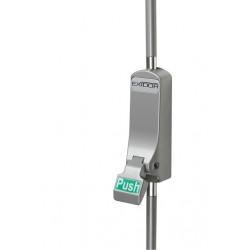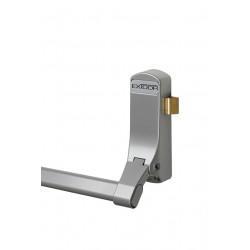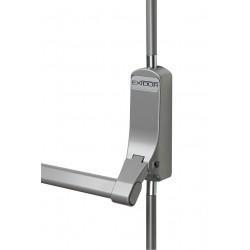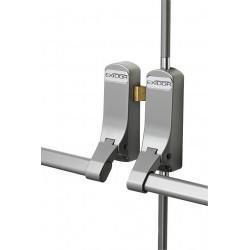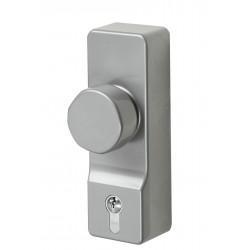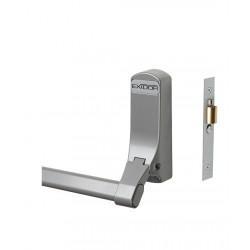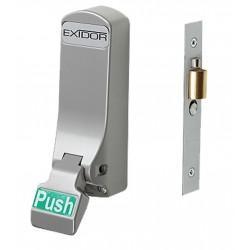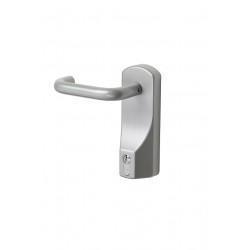Panic Door Hardware
Regulation Compliant Fire Exit hardware at the best prices.
At Door Controls Direct we stock a great range of Briton brand panic and emergency exit hardware. All of the products in this selection comply with Harmonised European Standards for emergency and panic escape hardware – EN 179 and EN 1125.
If your project requires products suitable for single doors, rebated or non-rebated pairs of doors we can supply you and all at fantastic prices. Push bars, paddle handles and exterior access levers or knobs come in an attractive silver finish.
In October 2003, it was recommended in European Law, that any panic hardware fitted to a fire door, be CE Marked.
There are two main regulations surrounding panic hardware and emergency escape doors; EN 179 and EN 1125 and the kind of traffic that uses the door will dictate which of these you need to comply with.
EN 179 – Personnel that have been trained in the use of the door and are fully aware of the escape routes and how to operate the products on the door. Push pads or paddle pads comply with this regulation as staff know which side of the door to find these on in the event that they need to use them to escape. You will find these usually in offices and should never be used in areas where the public may need to use them or where a panic situation is foreseen.
EN 1125 – Personnel that are unaware of how the door operates and escape routes used by the public. Push bars or Crash bars comply with this regulation as they span the width of the door and it does not delay a safe exit in an emergency situation when there is likely to be a relatively high amount of traffic passing through the door. There is an emphasis on safety rather than security with this standard.
If there is any doubt about building occupancy and requirements; EN 1125 should always be adhered to. Effective escape through a door should always require minimum effort without impediments.
Fire Exit Hardware can allow for many requirements. It might be that you need to maintain security on the outside but also wish to be able to access from the outside. In this situation, you may use a Mortice Panic Nightlatch with an Outside Access Device that contains a cylinder or even some compatible digital locks. If there is no need for access from the outside, you may be better suited to using hardware containing Rim Panic Latches.
Panic Hardware with Vertical bolts might not always be possible and some doors might not accommodate a rim latch. In these situations, mortice nightlatches can offer a solution to maintaining a higher level of security.
The Classification of Panic and Emergency Exit Devices:
There are ten digits in the classification of EN 1125 and EN 179:
Digit 1 – Category of Use
There is only one category identified in panic and emergency hardware; Grade 3 where there is a high frequency of use by public and others who are unlikely to exercise care. Both EN 179 and EN 1125 stipulate this grade.
Digit 2 – Durability
There are two categories of durability:
- Grade 6 – tested to 100,000 cycles
- Grade 7 – tested to 200,000 cycles
Digit 3 – Test Door Mass
There are three categories of test door mass:
- Grade 5 – Doors up to 100kg
- Grade 6 – Doors up to 200kg
- Grade 7 – Doors over 200kg
Digit 4 – Fire Suitability
There are three categories of fire door resistance acknowledged for panic hardware:
- Grade 0 – Not approved for use on fire or smoke assemblies
- Grade A – Suitable for use on smoke door assemblies, subject to a satisfactory assessment of the contribution of the panic/emergency device to the smoke resistance of specified smoke door assemblies.
- Grade B - Suitable for use on fire/smoke door assemblies, subject to satisfactory assessment of the contribution of the panic/emergency device to the fire resistance of specified fire/smoke door assemblies.
Digit 5 – Safety
- Grade 1 - There is only a single Grade identified here as all panic and emergency devices have a critical safety function, only this Grade is acceptable.
Digit 6 – Corrosion Resistance
Harmonised standard EN 1670 identifies two grades of corrosion resistance:
- Grade 3 – High Resistance (96 salt spray hours)
- Grade 4 – Very High Resistance (240 salt spray hours)
Digit 7 – Security
Hardware that complies with EN 179 has four identified categories for security and generally offer greater resistance again forced opening than hardware that complies with EN 1125.
- Grade 2 – 1000N
- Grade 3 – 2000N
- Grade 4 – 3000N
- Grade 5 – 5000N
Digit 8 – Projection of Device
There are two grades that refer to the projection of the exit device from the door face:
- Grade 1 – projection up to 150mm (also known as large projection)
- Grade 2 – Projection up to 100mm (standard projection)
Digit 9 – Type of Device
There are two categories for each standard:
EN 179:
- Type A – Emergency device with lever handle operation
- Type B – Emergency device with push or pull pad operation
EN 1125:
- Type A – Panic device with push bar operation
- Type B – Panic device with touch bar operation
Digit 10 – Field of Application
EN 179:
- A – Outward Opening - Single & Double Exit Doors; Active & Inactive Leaf
- B – Outward Opening - Single Exit Door Only
- C – Outward Opening - Double Exit Door; Inactive Leaf
- D – Inward Opening - Single Exit Door Only
EN 1125:
- A – Outward Opening - Single & Double Exit Doors; Active & Inactive Leaf
- B – Outward Opening - Single Exit Door Only
- C – Outward Opening - Double Exit Door; Inactive Leaf

